Luisa Aurora Viviana Rodal - Peace and work
Здесь есть возможность читать онлайн «Luisa Aurora Viviana Rodal - Peace and work» — ознакомительный отрывок электронной книги совершенно бесплатно, а после прочтения отрывка купить полную версию. В некоторых случаях можно слушать аудио, скачать через торрент в формате fb2 и присутствует краткое содержание. Жанр: unrecognised, на английском языке. Описание произведения, (предисловие) а так же отзывы посетителей доступны на портале библиотеки ЛибКат.
- Название:Peace and work
- Автор:
- Жанр:
- Год:неизвестен
- ISBN:нет данных
- Рейтинг книги:4 / 5. Голосов: 1
-
Избранное:Добавить в избранное
- Отзывы:
-
Ваша оценка:
- 80
- 1
- 2
- 3
- 4
- 5
Peace and work: краткое содержание, описание и аннотация
Предлагаем к чтению аннотацию, описание, краткое содержание или предисловие (зависит от того, что написал сам автор книги «Peace and work»). Если вы не нашли необходимую информацию о книге — напишите в комментариях, мы постараемся отыскать её.
Peace and work — читать онлайн ознакомительный отрывок
Ниже представлен текст книги, разбитый по страницам. Система сохранения места последней прочитанной страницы, позволяет с удобством читать онлайн бесплатно книгу «Peace and work», без необходимости каждый раз заново искать на чём Вы остановились. Поставьте закладку, и сможете в любой момент перейти на страницу, на которой закончили чтение.
Интервал:
Закладка:
LUISA AURORA VIVIANA RODAL
PEACE AND WORK

Editorial Autores de Argentina
Rodal, Luisa Aurora Viviana
Peace and work / Luisa Aurora Viviana Rodal. - 1a ed - Ciudad Autónoma de Buenos Aires : Autores de Argentina, 2021.
Libro digital, EPUB
Archivo Digital: online
ISBN 978-987-87-1363-2
1. Psicología. I. Título.
CDD 158
Editorial Autores de Argentina
www.autoresdeargentina.com
Mail: info@autoresdeargentina.com
Queda hecho el depósito que establece la LEY 11.723
Impreso en Argentina – Printed in Argentina
For the utopian spirit of John Gregor
Thanking the philosophical talks with David Gardiner and the intelligence of Lic. Javier Alfredo Larroudé, who could change the destiny of my existence
PART I
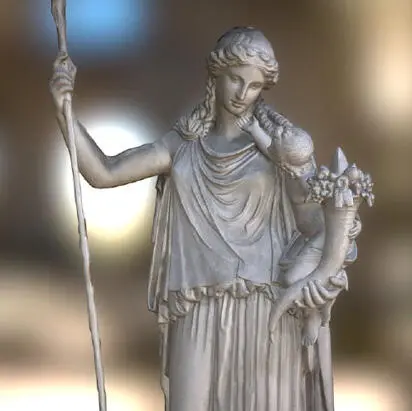
PROLOGE
The loving regard of Eirene manifests the proper relation of peace, the generating charity of prosperity, a generation founded on love. So does Hesiod expresses it to us at the dawn of Western culture.
The experience of peace that the Greek goddess inspires appears difficult to explicate it in philosophical words. Because eof this, the Prologue to this essay is simple the image of Eirene and Plutos. The suggesting iconicity of peace through the sensual materiality impresses on the mind in an unique and direct mode the intimate relation between peace and work, prosperity, common welfare, the especial activity of peace. I do not believe possible to exceed the evidence of this image by means of speculation. But, it has always been prevailing in civilization to develop the notion of peace, linked to work.
I believe that Philosophy is an inquisition, going beyond the personal or social justification. In this sense it is critical. And it is so regarding a possible reality always active. The real is act since Aristotle. Reality is activity. The productive and generating activity is labour, the task tat Increases an ephemeral and evanescent reality.
My investigation will search for peace, underlying the mutual relation with work.
I question that peace be immobility or mere repose and that work be suffering or chastisement. If history modelled thus these words, both founded on a pact, I think it is not necessary to confine peace to not activity (for example, pure contemplation) and labour to an ailing or expiatory task.
It could be intuited that it is presumptuous or arrogant to speak of reality as if it would exist the possibility of stating finally what it is the real. The human being intends science, being truly only an artist; the conjecture is his major approach to totality. The truth is undiscussable, even when it does not eixst absolutely; it is never late to recognize it. These hypotheses found the investigation about peace and work, criticizing notions considered as evident.
Reality is activity; and, perhaps, when one comprehends peace as quietness one cancels its energy. Labour allows the human reality of civilization and culture: it is not a simple suffering that would deserve to be obviated by leisure. Creativity and generation sprang from the task and performing activity; the civilizations are born out of the intelligent task of human being associated in the production of worldviews, possible due to the harmony of peace ( not only from peace and work understood as contract of pact).
Even in Physics, the energy is associated to work. Even in the quietness of contemplation, called peace, there is an active centre that allows it (God or Idea). Work and peace, implying each other, do not limit themselves to an agreement. Peace is the relating and generating activity, unfinished human task, utopia.
INTRODUCTION
Peace is utopia. Before the unquietness and the din of war, the serene gaze of Eirene expresses the relation of peace, founded in love.
The introduction of this essay is the image pf the goddess pf Peace, effectuating a non discursive beginning. The classical artistic interpretation simply shows in a glance, the intimate reference between peace and work. The image communicates the generating energy and prosperity proper to these principles. It also allows and convokes, to the daily labour (without the need of distinguishing between material and intellectual task), overcoming the notions of pact and contract generally associated with peace and work. It evinces that peace is not reduced to non aggression, nor labour to the technique or the art.
The image of Eirene transmits a comprehension of peace as concord and not merely a state arising from the cessation or war or truce. Peace is generating abundance, which, according with Hesiod and Isocrates, springs from work.
Homer depicts the scenes of peace and its prosperity in the shield which Hephaistos forged for Achilles (1). Hesiod refers her images in the shield of Herakles. Both texts include the artistic image of Eirene and Ploutos representing richness.
It is noteworthy that the sisters of Eirene are Dike (Justice) and Eunomia (Order, Harmony) and that she herself is the daughter of Zeus and Themis (Divine Justice), according to Hesiod (2).
A hymn of the V century says: “Peace gives birth of noble wealth... there is no din of bronze trumpets, and sleep, honey for the mind, still soothing the heart at daybreak is not pillaged from men´s eyelids... the songs of boys rise like flames”, in a similar way to the statement of Plutarch remembering the saying “in times of peace men are awaken by cocks, not by trumpets” (3). The comprehension of peace implied in that time in the charms of the sweetness of honey and the pious sacrifices to the gods (4).
Hesiod says that Peace edifies cities and their habitants flourish (5).
In the temple of Apollo, the Hymn to Peace had a liturgical function at the ceremonies (6).
Martius de Jesus observes that “the established association of peace with wealth achieved great importance during the fifth century B:C:” (7), quoting the lost tragedy Cresophonte, which invokes Peace with her deepness of wealth to hinder Strife which takes pleasure in iron (8). That is to say, peace is prosperity. Peace gathers dances, flowers, abundance,
According to María Dolores Mirón Pérez, “la Paz, en su limitada y tradicional acepción de “ausencia de guerra” o – “paz negativa”... abarcaba un sistema conceptual y simbólico amplio”. Eirene was the friend of parties (9). Who assured agriculture, generation, and fertility (10). The development of culture, stability, equilibrium, and prosperity were included in peace (11).
Even in the reduced sense of peace as pact, the activity and task of agreeing is supposed.
Eirene sweetly looks at his divine son Ploutos, who announce the abundance with his plenty agricultural cornucopia, the task of concord. One of the Horae (divinities of time and fertility), ruled even agricultural and civic rythms of a society eminently agricultural, protecting the crops.
The sculpture work of Cephisodotus (370 a.D.), showing Eirene with her son Ploutos in her arms, reveals aspects of peace that the contemporary hippie symbols limits to love. The gestureof Eirene ,ay proogue the discourses of Hesiod and Isocrates, linking work and peace.
I believe it is important to remember that the noun “peace” derives from the Latin pax-pacis, related with pascisci, verb which signifies “to accord” or “make a treat”; from its participle pactum come “pact” and “payment”. It designates a period of stability and without war, as also the personal and social tranquillity, the absence of unrest, violence, conflict and disturb. The Hebrew term Shalom indicates a state of spiritual and material welfare coming from God. The Pax Romana, gained during the High Empire, is applied to situations in which the military power exerts its hegemony. With Christianism, Jesus is the Princip of Peace, announcing the quietness or rest in God of the evangelic community, without enemies and founded on the charity of the Spirit.
Читать дальшеИнтервал:
Закладка:
Похожие книги на «Peace and work»
Представляем Вашему вниманию похожие книги на «Peace and work» списком для выбора. Мы отобрали схожую по названию и смыслу литературу в надежде предоставить читателям больше вариантов отыскать новые, интересные, ещё непрочитанные произведения.
Обсуждение, отзывы о книге «Peace and work» и просто собственные мнения читателей. Оставьте ваши комментарии, напишите, что Вы думаете о произведении, его смысле или главных героях. Укажите что конкретно понравилось, а что нет, и почему Вы так считаете.
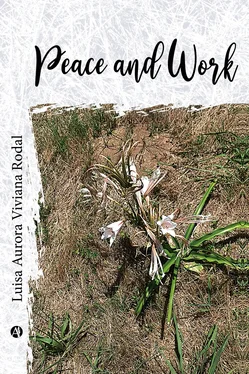
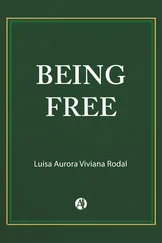

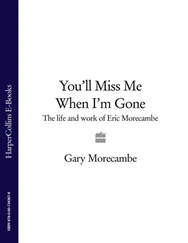
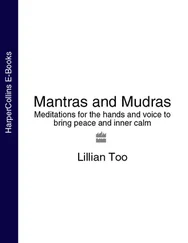



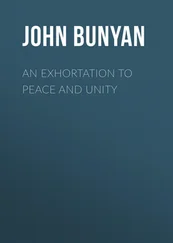
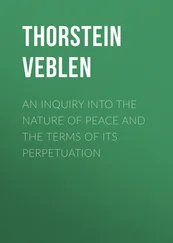
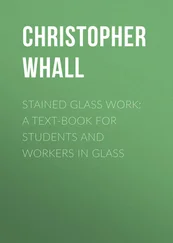
![William Frith - John Leech, His Life and Work. Vol. 1 [of 2]](/books/747171/william-frith-john-leech-his-life-and-work-vol-thumb.webp)
![William Frith - John Leech, His Life and Work, Vol. 2 [of 2]](/books/748201/william-frith-john-leech-his-life-and-work-vol-thumb.webp)